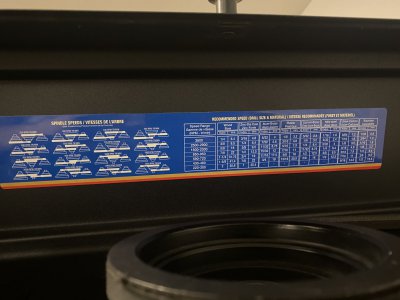Probably like most of us, we have drill presses that were more or less designed for drilling holes in wood. And so the RPM's are higher for this kind of use. However, most of us probably use them as much or more so for making holes in metal. And larger bits than say 1/2" require lower RPM's and >1" even s-l-o-w-e-r.
I picked up a vintage King brand drill press in decent condition but the slowest RPM handles 3/8" in steel okay. So I'm really looking hard at options to slow this (jet) motor down. And I'm not very good at this kind of thing (or much of anything really ). It seems I have basically two options-
). It seems I have basically two options-
1) source parts for an add-on pulley with jack shaft and fabricate a mount
or
2) local a 3 Phase motor and VFD controller
I don't know anything about either. Advantages or Disadvantages of either. From what I've read (and don't know if true or not), on 1), the jack shaft needs to be the same diameter as the motor shaft? If true, why?
Also, an advantage of option 1) is that I have all the torque of the motor at lower(est) RPM's, yes?
On option 2) I may not have torque at the lower speeds?
What are you experiences and thoughts/recommendations?
I picked up a vintage King brand drill press in decent condition but the slowest RPM handles 3/8" in steel okay. So I'm really looking hard at options to slow this (jet) motor down. And I'm not very good at this kind of thing (or much of anything really
1) source parts for an add-on pulley with jack shaft and fabricate a mount
or
2) local a 3 Phase motor and VFD controller
I don't know anything about either. Advantages or Disadvantages of either. From what I've read (and don't know if true or not), on 1), the jack shaft needs to be the same diameter as the motor shaft? If true, why?
Also, an advantage of option 1) is that I have all the torque of the motor at lower(est) RPM's, yes?
On option 2) I may not have torque at the lower speeds?
What are you experiences and thoughts/recommendations?




 )!
)!